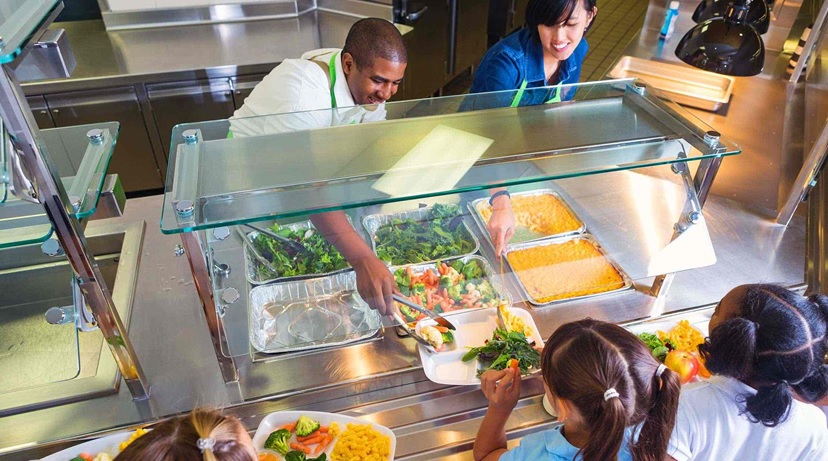
When hiring a food service company for your cafeteria, it is important to consider factors such as their experience and reputation in the industry, their ability to provide nutritious and delicious meals that meet dietary restrictions, their compliance with health and safety regulations, and their track record of customer satisfaction. Additionally, it is important to ensure they can work within your budget and can provide customized solutions tailored to your organizational needs.
Analyzing Your Cafeteria Needs
When it comes to running a successful school cafeteria, understanding your needs is crucial. This involves reflecting on your current cafeteria operation and determining what improvements can be made. One of the first steps in analyzing your cafeteria needs is by gathering feedback from those who use it daily- the students. Conducting surveys or focus groups with students can help you determine what foods they enjoy, what items they wish to see on the menu, and what areas need improvement.
For instance, you may find that students are dissatisfied with the lack of healthy options available. With this information, you can then work towards incorporating more nutritious meals and snacks into your cafeteria menu to promote healthier habits among students.
Another aspect to consider when analyzing your cafeteria needs is space allocation. Is there enough seating available for all students? Does the physical layout of the cafeteria pose an issue in creating efficient lines and reducing wait times? These are just some questions that need to be addressed when assessing your cafeteria space needs.
Just like how a well-oiled machine requires all its parts to work efficiently in order to produce excellent results, having a cafeteria that meets the needs of its users can contribute positively towards the overall educational environment and student experience.
By taking the time to analyze your cafeteria needs, you show that you value the satisfaction and health of your students, which ultimately leads to greater academic success and better attendance rates.
To aid in meeting those needs, let’s explore various types of food services that can be considered for use in school cafeterias.
Types of Food Services to Consider
There are a variety of food service models available today for school cafeterias that offer different advantages and disadvantages. The most popular ones include:
1) Self-Operated Cafeteria: In this model, schools manage their own food service program and hire their own staff. This option gives schools complete control over menu offerings and operations, but it can also be costly in terms of staffing and equipment.
2) Partnership with a Food Service Management Company: Schools can choose to partner with an experienced food service management company that takes care of all aspects of running the cafeteria for a fee. This option reduces workload for school administrators and guarantees quality service, but it can also limit the school’s control over the menu and quality of food.
3) Vending Machines/ Convenience Stores: This model typically features prepackaged items that are easy to grab on the go. It can reduce staffing requirements and provide more flexibility to students in choosing what they want to eat, but it does not offer the same level of variety or nutritional value as cooked meals.
Regardless of which food service model is chosen, it’s important that schools have a clear understanding of their budget before deciding on any option.
While self-operated cafeterias may give schools greater control over their menus and lower overall cost, partnering with an outside company can potentially save costs on salaries by outsourcing tasks such as accounting and payroll processing.
For instance, partnering with a reputable food service management company can help alleviate some of the burden from school staff while providing expertise in nutrition, recipe development, and procurement.
Once you’ve determined which type of food service best suits your school’s needs, you must then establish criteria for selecting the right food service provider. We’ll discuss these criteria in our next section.
Criteria for Choosing the Right Food Service Company
When choosing a food service company for your school cafeteria, it’s essential to prioritize quality over cost. A company that values local sourcing and healthy menu options may be more expensive upfront but ultimately benefit student health and satisfaction in the long run. Here are some key criteria to consider when evaluating a potential food service provider.
First and foremost, make sure that the company has all the necessary licenses, insurance, and compliance certifications. A reputable company should be able to provide you with proof of their qualifications upon request. In addition to ensuring regulatory compliance, a licensed professional is more likely to provide high-quality service and adhere to industry standards.
Another important criterion is the experience of the company’s staff members. Ask about their training programs, continuing education opportunities, and employee retention rates. Find out how long they’ve been in the business and if they have experience serving meals to students of all ages.
Finally, question the food service provider on the quality of their ingredients and equipment. Some companies may specialize in bulk purchasing, making it more affordable, but at a cost of compromising quality. On the other hand, providers opting for locally sourced or organic ingredients might drive costs up for schools. It’s therefore essential to balance both while still considering overall nutritional values within your menu offerings.
Choosing a food service company is like choosing an ingredient for a recipe – it depends on various factors such as price range, availability or convenience – however, selecting a low-cost supplier does not always equate to better quality products or services- this can ultimately lead to student dissatisfaction and even pose health risks.
Now that you have several key points in mind when it comes to selecting the right food provider for your school cafeteria operation. In the next section, we will delve into developing an efficient cafeteria operation with elements highlighting supplies, maintenance upkeep and operational stability.
Developing an Efficient Cafeteria Operation
The way your cafeteria operates is essential to the success of your school program. From the ordering process to serving food, every aspect of the cafeteria operation must be streamlined for maximum efficiency. The last thing you want is a messy and chaotic space that hinders your team’s ability to provide students with healthy and nutritious meals.
One crucial aspect of developing an efficient cafeteria operation is staff training. Your cafeteria staff should be trained on all aspects of food safety, including proper hygiene, storage techniques, and handling procedures. Make sure your team understands how to maintain high levels of cleanliness throughout the lunch service.
Another important step in creating an efficient cafeteria program is by establishing clear processes for the various tasks involved in running the cafeteria. From ordering food supplies to preparing for meals and managing inventory, every step should have a documented process that outlines responsibilities and expectations for everyone involved.
For instance, consider implementing standardized recipes for menu items, which ensures consistency in taste and adherence to nutritional guidelines. Standardized recipes help staff avoid waste by controlling portion sizes, avoiding overproduction, and preventing spoilage.
Additionally, it helps if different stations are set up within the kitchen area – one exclusively for washing dishes while another exclusively handles cooking equipment. Doing so speeds up cleaning times as there’s no delay between needing to switch between tasks.
Some schools have opted for automation systems such as touchpoints or automated ordering systems to deal with large student populations efficiently. However, while these methods work great at ensuring no student misses out on their lunch order being fulfilled correctly, they don’t necessarily decongest a food court or overcome table limit inefficiencies.
With a well-maintained cafeteria operation in place, you can move on to other priorities such as effective supply and maintenance management.
Ensuring Student Satisfaction and Nutritional Needs
When it comes to feeding school-aged children, ensuring their satisfaction with the meals provided is just as important as meeting their nutritional needs. After all, a satisfied student is much more likely to be engaged and productive in the classroom.
To ensure student satisfaction, it’s important to consider their preferences and tastes when selecting a food service company. For example, if your student population includes a significant number of vegetarian or vegan students, make sure the food service company you choose offers plenty of options for them.
One school in Northern California found that by partnering with a food service company that offered a wider variety of healthier options, they were able to increase their lunch participation by over 40%. By listening to student feedback and incorporating their preferences into the menu choices, they were able to improve overall student satisfaction and attendance.
In addition to meeting students’ taste preferences, it’s important to ensure that the meals provided are nutritionally balanced and meet government guidelines for school meals. This includes providing fruits and vegetables, whole grain options, lean protein choices, and limiting sodium and added sugars.
A study published in JAMA Pediatrics found that providing healthier meals in schools led to improved academic performance among students. The study showed that students who ate healthier meals had higher test scores and were absent less often than students at schools with less healthy meal options.
On the other hand, some critics argue that focusing too heavily on nutritional requirements can lead to wasted resources and unhappy students. For example, if a certain type of vegetable is required on every plate but goes uneaten by most students, this can lead to wasted food and resources.
While it’s certainly important to avoid waste, it’s also important to prioritize student health. By finding creative ways to incorporate vegetables into meals so they are more appealing to students or offering smaller portions of less popular items, schools can both meet nutritional guidelines and reduce waste.
It’s like packing a child’s lunch – you want to make sure they are getting healthy foods but also include something they enjoy and will actually eat. Finding the right balance is key to ensuring both student health and satisfaction.
In addition to providing healthy and appealing meals, it’s important to gather feedback from students on a regular basis. Encourage them to share their thoughts on meal options and listen to their suggestions for improvement. By involving students in the process, you can increase their investment in the overall school community.
In conclusion, choosing a food service company that prioritizes student satisfaction and nutrition is crucial for creating a successful school cafeteria. By considering student preferences, and nutritional guidelines, and gathering regular feedback, schools can create an environment where students are eager to participate in meal programs and nourish their bodies for success in the classroom.












